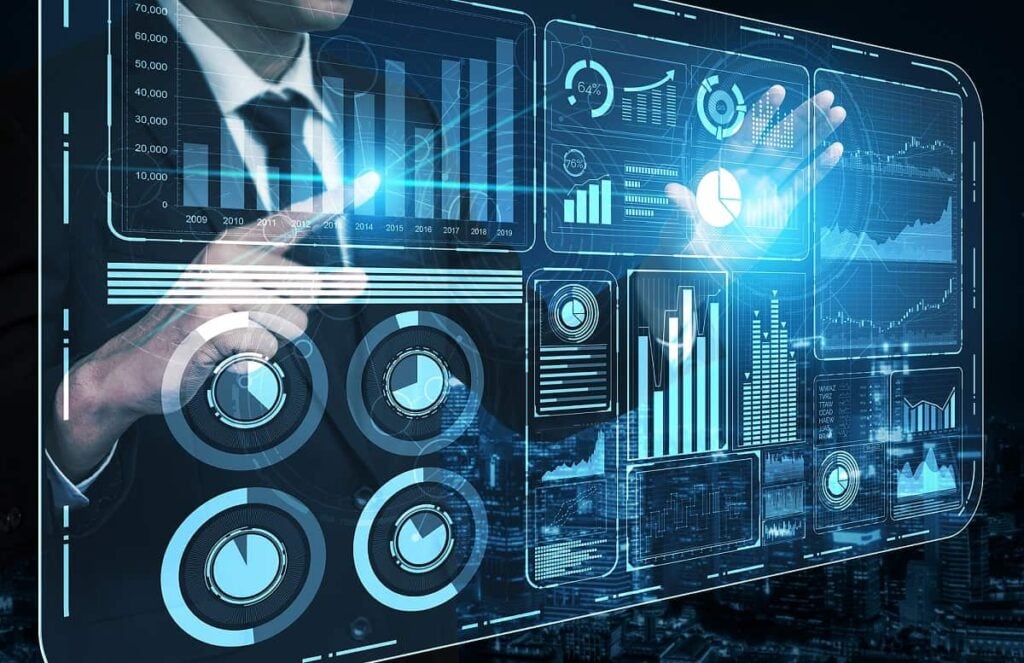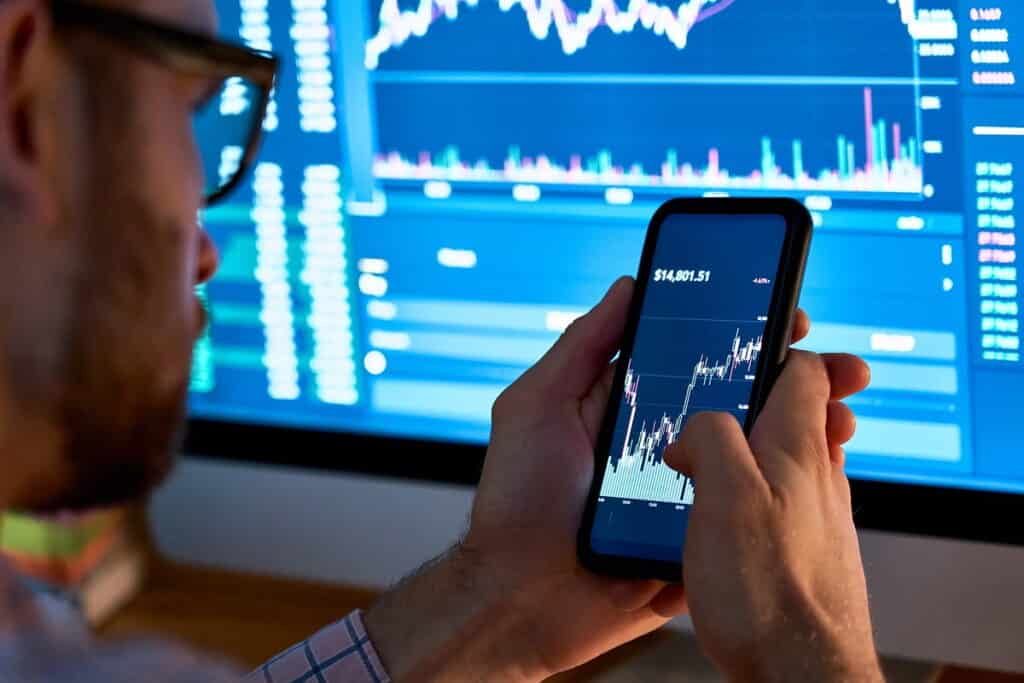Is Artificial Intelligence the Next Dot-Com Bubble?
Table of contents

If you’ve played Texas Hold’em, then you know how tough it is to be a good poker player. Lots of venture capitalists like to play poker, so it wasn’t surprising to see one who thought to himself “let’s see how good artificial intelligence (AI) really is“. He consulted a team of engineers and computer scientists to see where they might be able to exploit the AI agent named Lengpudashi. They then played 36,000 hands over 5 days and the AI agent kicked the isht out of them. We’ll stick to playing rock-paper-scissors with AI, but all of this is leading to some serious visibility for AI as an emerging technology – which as investors make us want to get some skin in the game. The problem is, there aren’t many ways to do that yet.
The recent news that artificial intelligence (AI) startup Afiniti may have confidentially filed for IPO was the first time that we started to feel like this thing might be revving up for real now. It wasn’t just because this would be the first pure-play AI startup to see an IPO, it was because we really couldn’t believe how effective Afiniti’s technology was in adding value. Afiniti is so confident in their AI technology that their business model is simply to take a cut of all the money you make as a result of using their technology. That there is real value, but don’t expect to see that everywhere. As the bright minds at CB Insights said, “if you have a website now, you have AI”. We believe it is equally important to focus on “AI pretenders” as it is to focus on the real “AI pure-plays” because we want all the investment dollars channeled to the appropriate places. This is one reason we go out of our way to expose over-the-counter (OTC) stocks.
When the media is not expressing moral outrage over someone’s bad decisions on an aircraft, they seem to be talking more and more about AI which made us think. Will we see history repeat itself and have the “dot-com bubble” we saw peak in early 2000s all over again, except this time with AI? If you’re under the age of 25, you weren’t even born when the dot-com bubble ended but for those of you that were, here’s something that will jog your memory:
Maybe the most significant unanswered question from the dot-com era is, how the heck did Elon Musk not only grow his hair back but also get better looking over time? It’s a proven fact that a billion dollars will turn a male 6 into a male 8, but this seems inexplicable. The next most important question is, how could the dot-com bubble even happen? First, let’s start with a refresher.
What Happened During the Dot-Com Era?
Essentially what happened in a nutshell is that personal computers became a thing thanks to Windows 95 and then once everyone got online, every entrepreneur out there started building websites ending in “.com” and promising immense future riches. Everyone got greedy, then, here’s how good/bad things got:
- From 1995 to 2000, the value of the NASDAQ Composite index rose +400% reaching a P/E of 200 (P/E is a largely useless term we use in finance to make it sound like we know more than you do but to put this into perspective, the NASDAQ P/E value today is just 27.8)
- At the peak of the hype on March 10, 2000 when all the bag-holders had loaded up, the market fell -78% over the next 30 months
- The most “successful” stock in that period was Xcelera.com which rose +74,000% in a single year. It was delisted and worthless 4 years later
- The most “successful” IPO saw a +606% share price increase in the first day of trading before it saw shares fall from $97 to just 10 cents
While some good companies like Amazon.com (NASDAQ:AMZN) came out of the dot-com era to emerge as winners, most didn’t and a tremendous amount of wealth just evaporated thanks to greed or what was famously coined as “irrational exuberance”. We know we’re trying to draw a parallel between AI and dot-com way too early but that’s the point. Let’s first start by anticipating what path AI might take if it were to turn into the next dot-com.

There are certainly some similarities between AI and dot-com. First of all, today’s low interest rates mimic the low interest rates we saw during the dot-com bubble which fueled investments. The idea is that if it’s cheap to borrow money (usually called buying on margin) and you can invest in the market and make a killing, why not? Secondly we’re also seeing a very large number of AI startups getting into the game (over 1,500) which is the same sort of pile-on mentality we saw in the dot-com era. Thirdly, both “dot-com” technology and “AI technology” are industry agnostic and have thousands of potential applications. Lastly, in both cases we’re dealing with a technology that most people don’t understand too well. In the dot-com era, you threw up a website and you were an “eCommerce company”. Now you just add a tagline to that same website that says “powered by AI” and now you’re an “AI company”. But herein lies the difference between the two. The dot-com bubble happened because of the promise of future value. AI offers up value today.
How Can You Tell What is Artificial Intelligence?
You know you can tell something is using artificial intelligence? Because it does stuff that is impossible to do today with linear programming methods. Think you can code a software program that can play Texas Hold ‘Em and win against professional players without using AI? No way. While you may be able to do so for a game like chess, it’s just not possible to do so for a game as complex as Go or Texas Hold’em. The litmus test for any “AI company” should be “show me a real-world quantifiable use case for your AI technology that demonstrates superior performance, is scalable, and that gets better over time“. If the company can’t, then they have a technology looking for a problem to solve. Tell them to come back when they’ve solved a problem.
For retail investors, Nvidia (NASDAQ:NVDA) is a very good example of what type of performance you can expect from stocks that have valid exposure to the value that AI brings to the table. For any publicly traded stock that suddenly “starts using AI”, always look for proof that said AI impacts the bottom line. This should come in the form of an earnings call that blows expectations out of the water followed by an excited CTO talking about how he has converted to AI and this is just the tip of the iceberg.
Key Takeaways
Whatever value proposition is being thrown up by whatever company it is that you’re thinking about investing in should be proven by showing you the money. Look at how Afiniti modeled their business such that they get paid when you get paid. Artificial intelligence works at a speed that shouldn’t require years to add value but rather weeks. If a potential artificial intelligence IPO is on the table, they better be making money. Likewise when any large corporate claims they are using artificial intelligence to add value, they better be able to quantify that value.
A “technology” that adds no value like social media often focuses on active users rather than profits. That’s the dot-com way and we’ll see how that pans out for everyone. This is not the case with AI. When you hear someone touting the merits of their “AI technology”, this needs to be accompanied by hard numbers that investors can understand otherwise it should be tossed in the dustbin alongside the Xcelera.coms of the world. Like Elon Musk’s illustrious new head of hair, the proof of validity for “true AI” is the outcome itself.
Sign up to our newsletter to get more of our great research delivered straight to your inbox!
Nanalyze Weekly includes useful insights written by our team of underpaid MBAs, research on new disruptive technology stocks flying under the radar, and summaries of our recent research. Always 100% free.
















Someone asked who is alongside Elon Musk. That’s a dashing young Peter Thiel. This guy:
https://nanalyze.com/2016/11/peter-thiel-breakout-labs/
Someone asked who is alongside Elon Musk. That’s a dashing young Peter Thiel. This guy:
https://nanalyze.com/2016/11/peter-thiel-breakout-labs/
“Think you can code a software program that can play Texas Hold ‘Em and win against professional players? No way. While you may be able to do so for a game like chess, it’s just not possible to do so for a game as complex as Go or Texas Hold’em.”
Both feats have been accomplished. I think this article needs som further researching.
Thank you for the comment!
Have both feats been accomplished without using cognitive computing or any form of AI?
We’ll add that to the sentence to make it more clear.
AI defeated a human at Go more than a year ago.